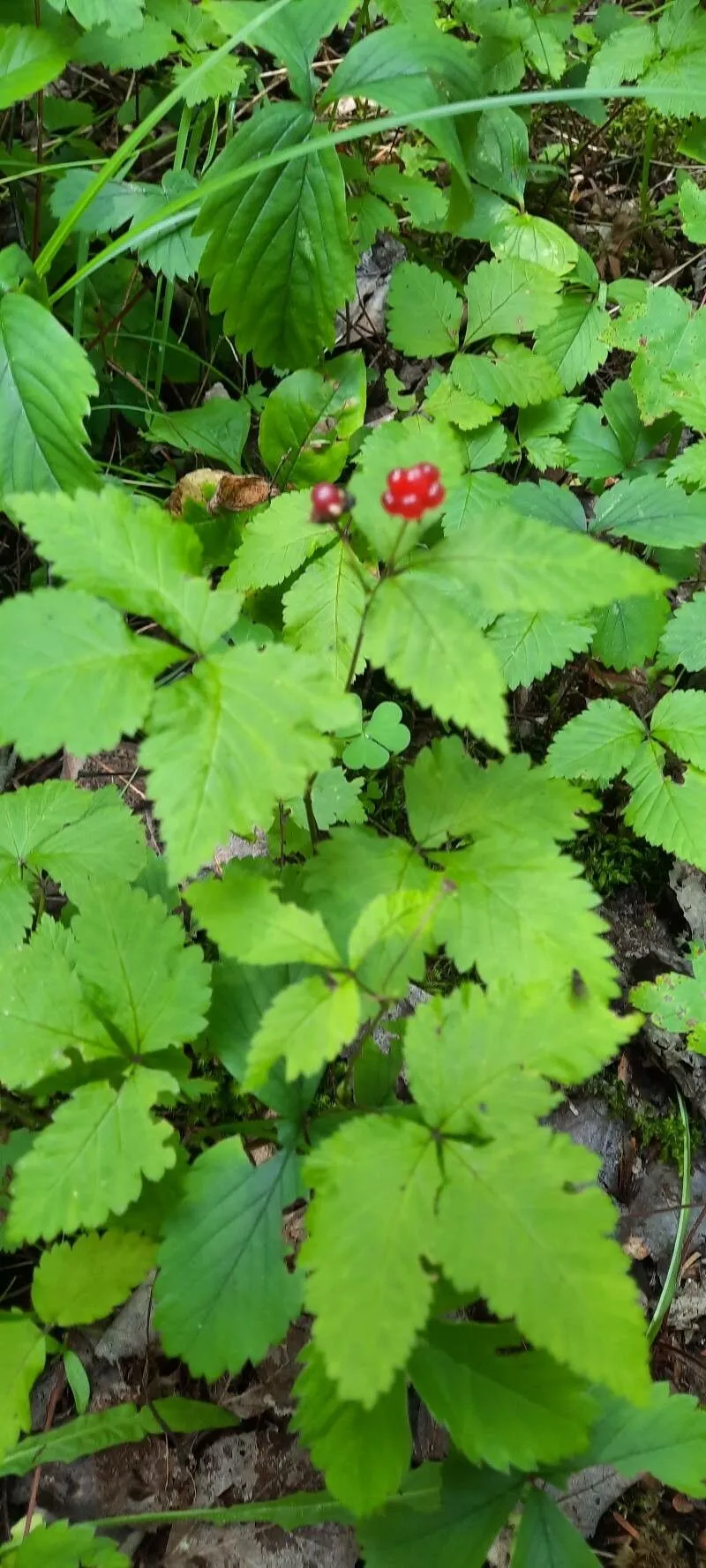
Author: Raf.
Bibliography: Med. Repos. 2: 333 (1811)
Year: 1811
Status: accepted
Rank: species
Genus: Rubus
Vegetable: Unknown
Observations: Subarctic America to N. & E. U.S.A.
The Dwarf Raspberry, scientifically recognized as Rubus pubescens, is a hardy perennial plant that thrives across a wide range of environments from Subarctic America to the northern and eastern regions of the United States. This plant is a notable member of the Rosaceae family, a diverse family of flowering plants that includes many economically significant fruits.
First described in 1811 in the Medical Repository by the botanist Rafinesque, Rubus pubescens is distinguished by its ability to adapt and survive in cooler climates. This resilience makes it a common sight in forested areas, thriving in well-drained, moist soils.
The Dwarf Raspberry typically grows low to the ground, usually only reaching heights of 10 to 30 centimeters. The leaves are compound, with three to five leaflets that are slightly hairy on the underside, which is indicative of its species name, “pubescens,” meaning hairy or downy.
In late spring to early summer, Rubus pubescens produces small white to pinkish flowers, each with five delicate petals. These are eventually replaced by red, aggregate fruits that are not only edible but also quite tasty, albeit smaller than those of the more commonly known cultivars.
The fruits, while consumed by humans, are also an essential part of the diet for various wildlife, including birds and small mammals, making the dwarf raspberry an important species in its ecosystem. Additionally, the plant has been utilized in traditional medicine, although it is less prominent in this regard compared to other members of the Rubus genus.
Whether grown for its aesthetic appeal, its edible berries, or its ecological contributions, the Dwarf Raspberry is a fascinating and versatile plant. Its ability to thrive in cooler climates and its attractive, delicate fruits make it a noteworthy addition to wild gardens and natural landscapes.
Eng: dwarf raspberry, dwarf red blackberry, creeping red raspberry, dewberry, dwarf red raspberry, swamp red raspberry, trailing red raspberry
Fra: ronce pubescente, catherinette, catherinettes
En: Dwarf raspberry, DWARF RED RASPBERRY, Dwarf red blackberry, Creeping red raspberry, Dewberry, Swamp red raspberry, Trailing red raspberry
Fr: Ronce pubescente, Catherinette, Catherinettes
Taken Jul 18, 2021 by Pascal Guerin (cc-by-sa)
Taken Jul 16, 2021 by Josh Keddy (cc-by-sa)
Taken Jul 11, 2020 by kay chris (cc-by-sa)
Taken Jul 8, 2021 by Christopher Sainthill (cc-by-sa)
Taken Jun 22, 2021 by Rin Amorette (cc-by-sa)
Taken Jul 11, 2021 by Roland Blahnik (cc-by-sa)
Taken Jun 22, 2021 by Rin Amorette (cc-by-sa)
Taken Jun 26, 2022 by D Mall (cc-by-sa)
Taken Jul 20, 2021 by jef2d (cc-by-sa)
Taken Jul 19, 2022 by Lyse Roberge (cc-by-sa)
Taken May 30, 2020 by Bianca Legault (cc-by-sa)
Taken May 29, 2021 by Danielle Mccloy (cc-by-sa)
Taken Jun 22, 2021 by Rin Amorette (cc-by-sa)
Taken Jul 2, 2020 by Éli Thé (cc-by-sa)
Taken Jul 1, 2021 by James Forner (cc-by-sa)
© copyright of the Board of Trustees of the Royal Botanic Gardens, Kew.
© copyright of the Board of Trustees of the Royal Botanic Gardens, Kew.
Family: Myrtaceae Author: (F.Muell.) K.D.Hill & L.A.S.Johnson Bibliography: Telopea 6: 402 (1995) Year: 1995 Status:…
Family: Rubiaceae Author: Pierre ex A.Froehner Bibliography: Notizbl. Bot. Gart. Berlin-Dahlem 1: 237 (1897) Year:…
Family: Sapindaceae Author: Koidz. Bibliography: J. Coll. Sci. Imp. Univ. Tokyo 32(1): 38 (1911) Year:…
Family: Asteraceae Author: A.Gray Bibliography: Pacif. Railr. Rep.: 107 (1857) Year: 1857 Status: accepted Rank:…
Family: Fabaceae Author: Medik. Bibliography: Vorles. Churpfälz. Phys.-Ökon. Ges. 2: 398 (1787) Year: 1787 Status:…
Family: Aspleniaceae Author: (Cav.) Alston Bibliography: Bull. Misc. Inform. Kew 1932: 309 (1932) Year: 1932…